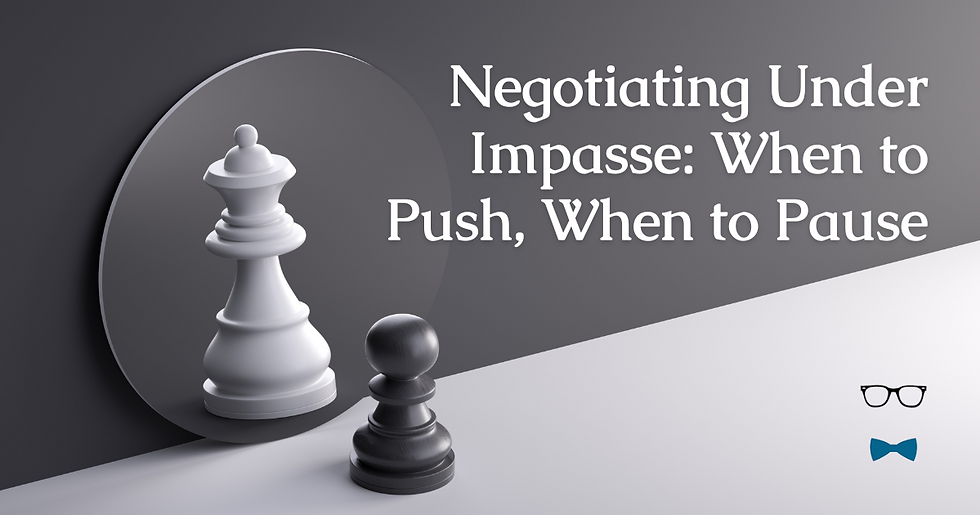Blind Negotiations in Multi-Party Mediation: Why Parties May Choose Not to Peek
- Cooper Shattuck

- Apr 30
- 2 min read
In mediations involving multiple parties, one of the most underutilized yet powerful tools in a mediator’s toolbox is the blind negotiation.

At first glance, the idea of making offers or contributions without knowing what others are putting on the table may seem risky, even illogical. Why would any party agree to negotiate blindly? But in multi-party disputes, where dynamics are often tangled and emotions run high, blind negotiations can serve a strategic and psychological purpose that traditional transparent bargaining simply cannot.
What Is Blind Negotiation?
Blind negotiation in mediation occurs when parties submit offers or contributions to a global settlement without knowing the specific terms offered by other parties. The mediator, acting as a neutral, collects and evaluates each party’s position confidentially. Only if the collective contributions result in a settlement figure that all sides can live with are the terms revealed or finalized, or they may even be kept confidential.
Why Embrace Blind Negotiation?
1. Avoids the Blame Game
When parties know how much others are contributing, negotiations can easily derail into arguments over who’s paying their "fair share." Blind negotiations bypass this entirely, allowing the mediator to focus on reaching a viable global figure without inviting comparison or resentment.
2. Encourages Good-Faith Offers
Because no one knows what others are offering, each party is encouraged to submit a reasonable proposal rather than anchoring based on someone else’s position. This often results in more genuine efforts to resolve the case.
3. Shields Internal Politics
In cases involving co-defendants or insurers with competing interests, transparency can backfire. Blind negotiations protect against internal finger-pointing and give each party space to evaluate their exposure independently and confidentially.
4. Preserves Negotiating Capital
If blind negotiation fails to reach a deal, parties still retain the option of reverting to traditional negotiation methods. Their offers remain confidential, so no position has been weakened by premature disclosure.
5. Allows the Mediator to Manage Expectations
The mediator can identify where gaps exist and who is most out of step—without naming names. This enables targeted conversations that realign parties toward resolution without escalating tension.
Not Just for Settlement Amounts
Blind negotiation isn’t limited to dollars and cents. It can also be used to determine how to allocate non-monetary terms, such as confidentiality, timing of payment, or responsibility for future obligations—especially when more than one party may be called upon to contribute something other than money.
A Tool, Not a Trick
Blind negotiations require trust—in the process, the mediator, and the possibility of resolution. But when done right, they can create a pathway to settlement that would otherwise be blocked by competing egos, rigid demands, or fear of being exploited.






Comments